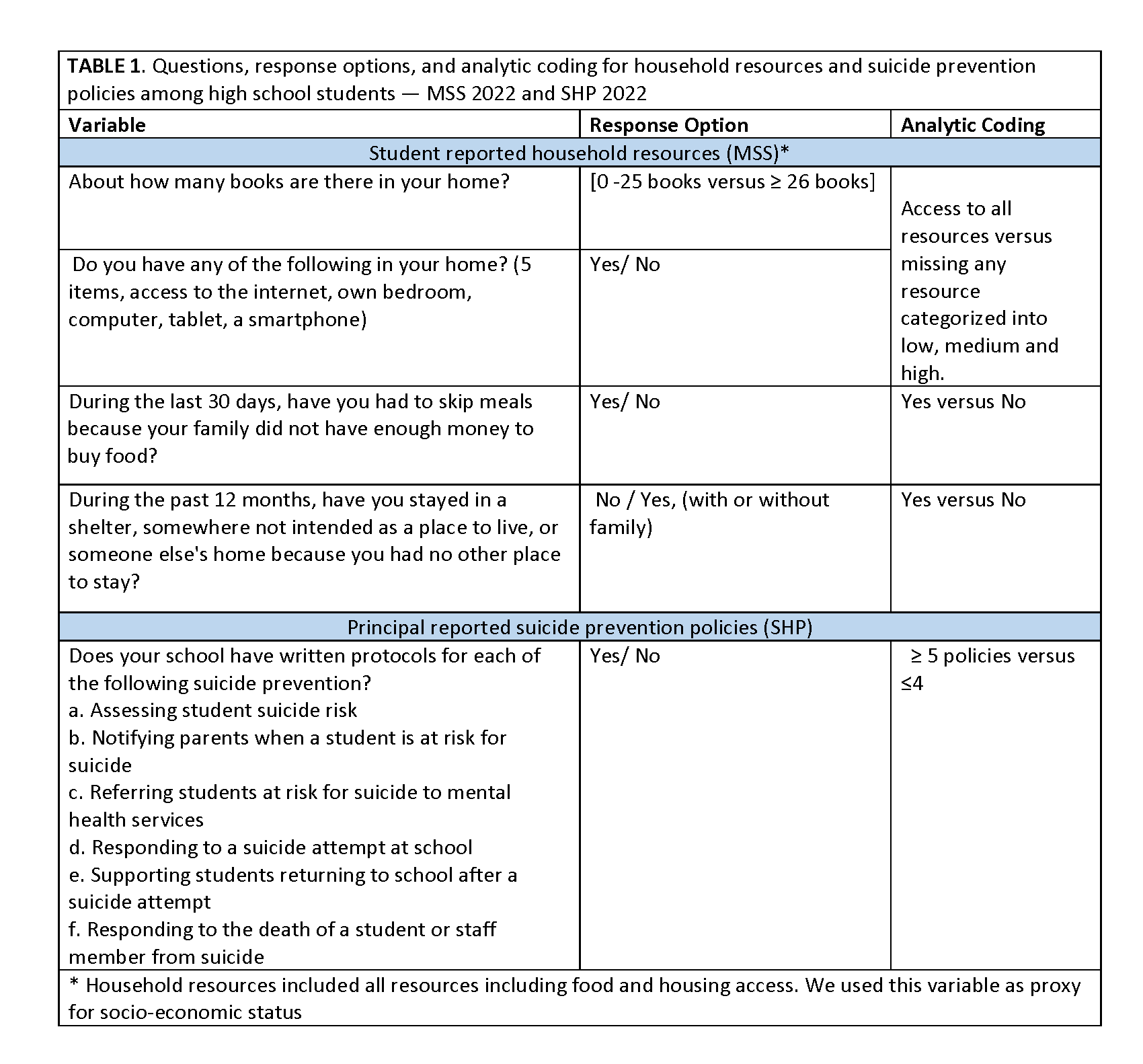Health Equity/Social Determinants of Health 11
Session: Health Equity/Social Determinants of Health 11
219 - Social drivers of suicidal thoughts and behaviors among adolescents
Monday, April 28, 2025
7:00am - 9:15am HST
Publication Number: 219.6669
Eunice M.. Areba, University of Minnesota School, Minneapolis, MN, United States; Michelle A. Mathiason, University of Minnesota, Minneapolis, MN, United States; Patricia Jewett, University of Minnesota Medical School, Minneapolis, MN, United States; Lindsay A.. Taliaferro, University of Central Florida College of Medicine, Orlando, FL, United States; Ying Song, University of Minnesota, Minneapolis, MN, United States; Iris W. Borowsky, University of Minnesota Medical School, Minneapolis, MN, United States
- EA
Eunice M. Areba, RN, PhD (she/her/hers)
Clinical Assistant Professor
University of Minnesota School
Minneapolis, Minnesota, United States
Presenting Author(s)
Background: National data indicate a rapid increase in suicide rates with wide inequities by sex, ethnoracial groups, and geography. Population-based surveillance data provides critical information on the prevalence of suicide ideation (SI) and suicide attempts (SA). Merging these data with measures of social conditions and local needs can increase our understanding of suicidal thoughts and behaviors, and contribute to effective suicide prevention efforts.
Objective: Examine associations among needs, local resources and SI and SA
Design/Methods: We integrated measures from two datasets (American Community Survey (ACS) 2018-2022 and Health Professional Shortage Area Scores (HPSA)) into a cross-sectional dataset comprising the 2022 Minnesota Student Survey (MSS, 8th, 9th, and 11th grades, n=15,080) and the 2022 School Health Profiles (SHP, n=74 schools) based on spatial overlay and attribute join. Using the schools’ respective census block groups, determined by their longitudes and latitudes, we joined socio-economic characteristics from ACS (employment and insurance) to schools. The analytic sample was restricted to students in schools with complete SHP data. We assessed associations of mental health [MH] and primary care [PC] practitioner shortage, insurance coverage, school-based suicide prevention policies, and past year SI and SA using multivariate logistic regression models, adjusted for household resources, sex and grade.
Results: Overall, 13.9% of students reported SI and 3.7% reported SA. Students with limited household resources were 3.29 times more likely to experience SI (95% CI, 2.78-3.89) and 7.45 times more likely to experience SA (95% CI, 5.78-9.57) compared to those with high resources. Insurance coverage was strongly associated with both SI and SA. The odds of SA were 23% lower (95% CI 0.61-0.87) in high insurance coverage areas compared to areas with ≥3% rate of being uninsured. Students were 1.13 times more likely to experience SI (95% CI 1.00-1.27) in severe PC shortage areas, and 1.28 times more likely to experience SA (95% CI 1.05- 1.55) in moderate MH shortage areas compared to those in no shortage areas. Suicide prevention policies were not significantly associated with SI or SA.
Conclusion(s): Variability in implementation of school-based suicide prevention policies and length of time may affect their effectiveness. Policies that increase access to household resources, health care practitioners, and health insurance can provide essential supports and opportunities for early identification of suicide risks and comprehensive health assessments which can decrease suicide rates for adolescents.
TABLE 1. Questions, response options, and analytic coding for household resources and suicide prevention policies among high school students — MSS 2022 and SHP 2022
 * Household resources included all resources including food and housing access. We used this variable as proxy for socio-economic status
* Household resources included all resources including food and housing access. We used this variable as proxy for socio-economic status Table 2. Prevalence of suicidal ideation (SI) and suicide attempts (SA) among high school students, overall and by social needs among students and schools—Minnesota Student Survey and School Health Profiles, 2022
.png) *Health Professional Shortage Areas (HPSA)
*Health Professional Shortage Areas (HPSA)^ School-based part-time or full time Registered Nurse (RN).
¶ The total number of students answering SI and SI questions varied because of student did not answer the question.
Table 3. Associations of social needs and resources with suicidal ideation and suicide attempts in the past 12 months, Minnesota Student Survey (MSS) and School Health Profiles (SHP), 2022.
.png) Abbreviations. OR=Odds ratios, CI=confidence Intervals, PC=Primary Care, MH=Mental Health Care.
Abbreviations. OR=Odds ratios, CI=confidence Intervals, PC=Primary Care, MH=Mental Health Care.§ Model adjusted by sex and grade only.
Separate multivariate logistic regression models estimated social needs and resources between students who reported experiencing SI or SA. All models were adjusted by household resources, sex and grade

